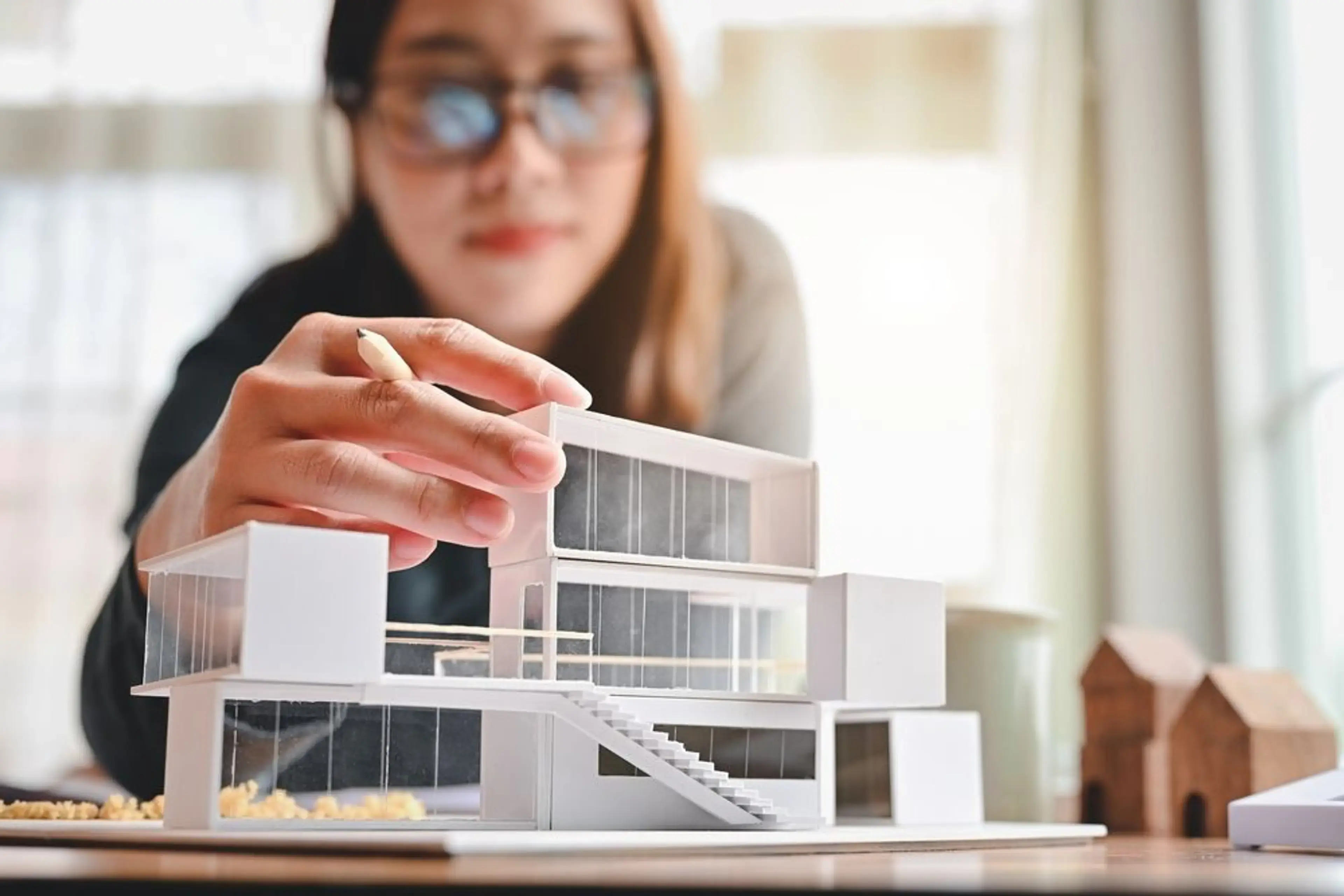Architect-Approved Home Renovation Ideas
Architect-Approved Home Renovation Ideas
Blog Article
Recognizing the Diverse Occupation Paths Available for Aspiring Architect
As a hopeful Architect, you have a globe of profession courses waiting for you. Whether you're attracted to conventional design or the subtleties of sustainable style, there's a particular niche that lines up with your passions.
Conventional Design: Creating Structures and Frameworks
Standard design concentrates on creating buildings and structures that blend functionality with aesthetic appeal. As you discover this area, you'll value the intricate balance between type and objective. You'll find out to draw inspiration from historical styles, including aspects like proportion, materials, and workmanship. Your layouts can mirror cultural heritage, showcasing local traditions while satisfying contemporary requirements.
You'll establish skills in drafting, model-making, and site analysis, enabling you to imagine and interact your ideas efficiently. Engaging with clients, you'll need to understand their vision and translate it into feasible layouts.
In addition, building codes and sustainability practices are vital in your job, guaranteeing your frameworks are secure and eco-friendly. As you expand in your occupation, you'll discover opportunities in residential, commercial, or also repair tasks, each offering special difficulties. Embracing traditional style paves the way for a meeting occupation that admires the past while shaping the future.
Urban Preparation: Shaping Communities and Public Spaces
As an ambitious Architect, you can play a vital role as a city planner, changing exactly how communities connect and operate. By using neighborhood interaction techniques, you'll ensure that residents have a voice fit their atmosphere. And also, integrating lasting layout principles will certainly help develop spaces that not only fulfill today's needs yet also secure the future.
Duty of Urban Planners
While numerous could consider engineers as the sole enthusiasts behind structures, urban coordinators play an important duty fit the wider landscape of areas and public spaces. They examine land usage, zoning laws, and neighborhood requires to create sustainable atmospheres that boost quality of life. By teaming up with various stakeholders, you'll assist create parks, transportation systems, and houses that promote social interaction and ease of access. Urban organizers also concentrate on environmental considerations, making sure that growths integrate environment-friendly spaces and assistance biodiversity. Your know-how in spatial layout and community dynamics allows you to envision future growth while preserving cultural heritage. In this vital duty, you'll straight affect just how individuals experience their environments, making every task a possibility for positive change.
Neighborhood Engagement Strategies
Effective neighborhood engagement techniques are vital for metropolitan planners to ensure that the voices of citizens are listened to and valued in the planning process. To cultivate meaningful discussion, you should focus on open forums and workshops where community members can reveal their ideas and issues. By actively paying attention and including feedback, you'll produce areas that show the neighborhood's demands, inevitably leading to even more effective and lasting urban settings.
Lasting Layout Concepts
When designing metropolitan spaces, incorporating sustainable design concepts is critical for developing atmospheres that flourish both environmentally and socially. Take into consideration integrating green rooms, like parks and gardens, to improve biodiversity and improve air top quality.
Designing with water conservation in mind is additionally essential-- assume regarding rain yards and permeable surface areas to manage stormwater. Entailing neighborhood participants during the preparation process warranties that the areas you create satisfy their needs and urge social interaction. By welcoming these concepts, you'll add to dynamic, lasting metropolitan landscapes that profit everybody.

Landscape Design: Creating Lasting Exterior Settings
As you check out landscape architecture, you'll uncover crucial layout principles that create attractive and useful exterior areas. Sustainable techniques play a crucial role in ensuring these settings flourish while minimizing ecological effect. And also, you'll discover a variety of job chances that allow you to make an actual difference in just how people interact with nature.
Layout Principles in Landscape
Comprehending layout concepts in landscape style is essential for creating sustainable outside atmospheres that balance with nature. You'll need to consider aspects like percentage, range, and equilibrium to assure your layouts really feel natural and welcoming. In addition, pay focus to seasonal adjustments, making with products that match the environments year-round.
Lasting Practices Introduction
Lasting practices in landscape style not only read more concentrate on looks but likewise focus on ecological health and wellness and resource conservation. You can create rooms that promote soil health and wellness, such as using organic materials and exercising permaculture principles. Ultimately, these methods assure your layouts profit both people and the environment for years to come.
Occupation Opportunities Expedition
With a strong foundation in lasting methods, landscape design provides a variety of occupation courses that allow you to make a meaningful effect on the atmosphere. Urban organizers typically team up with landscape designers to produce environment-friendly spaces in urban settings, enhancing city livability. If you're enthusiastic concerning education, consider coming to be a landscape design educator, motivating future generations.
Lasting Layout: Concentrating On Eco-Friendly Practices
As you explore your job in architecture, welcoming eco-friendly practices can set you apart in an affordable area. Lasting layout focuses on creating structures that reduce ecological effect while boosting passenger well-being. By integrating eco-friendly materials, energy-efficient systems, and sustainable structure techniques, you'll add to a greener future.
Beginning by acquiring understanding of eco-friendly accreditations like LEED or BREEAM, which can boost your qualifications. Think about how all-natural light, air flow, and thermal performance can maximize style. Collaborate with engineers and environmental professionals to introduce remedies that minimize waste and save sources.
Do not forget the relevance of community involvement-- engaging local stakeholders can motivate styles that balance with the environment. As customers progressively prioritize sustainability, your experience in environmentally friendly practices will not just attract projects however likewise meet your enthusiasm for responsible architecture. Welcome this vital facet of the career, and view your career thrive.
Historic Conservation: Protecting and Bring Back Cultural Heritage
While you commence on your building journey, consider the vital function of historic conservation in preserving our social heritage. This area focuses on the security and reconstruction of considerable structures, sites, and structures that inform the stories of our past. By taking part in historical conservation, you'll assist secure the building legacy that forms community identification.
As a historic preservation Architect, you'll assess historic relevance and analyze the condition of structures. You'll function carefully with historians and preservationists to assure genuine repair strategies are employed. This job course enables you to blend imagination with study, enabling you to make options that value initial products and craftsmanship.
Your work not only adds to sustainability by recycling existing buildings however likewise fosters a sense of satisfaction within neighborhoods. Embracing this course will certainly assist you become a guardian of history, maintaining the stories and appearances that improve our lives.
Inside Architecture: Enhancing Indoor Spaces
Historic preservation and indoor design both share a commitment more info to boosting the constructed environment, yet they concentrate on different aspects. While historic preservation stresses preserving a structure's social and historic worth, interior style zeroes in on optimizing interior rooms for functionality and appearances.
As an ambitious Architect, click here you'll locate that interior architecture permits you to blend creativity with technological abilities. You'll design spaces that not just look excellent but also promote comfort and effectiveness. This field involves comprehending exactly how light, color, and products engage within a room, influencing mood and use.
You'll deal with numerous projects, from residential homes to commercial offices, ensuring that each atmosphere fulfills the demands of its passengers. By focusing on user experience, you can transform interiors right into practical and motivating areas, making a considerable influence on just how people interact with their surroundings. Accept the chance to improve interior environments and form the way people live and work.
Industrial Style: Combining Capability With Appearances
Industrial layout plays a vital function in developing products that flawlessly blend looks with functionality, making certain that what you use everyday is not just visually attractive however also sensible. As a hopeful Architect, you might engage yourself in this field, focusing on making every little thing from furnishings to customer electronics. Your work involves recognizing individual demands, materials, and making processes, permitting you to produce cutting-edge options that enhance day-to-day experiences.
In commercial layout, you'll frequently collaborate with makers, engineers, and marketers, ensuring that your layouts are not just attractive but also viable. This occupation path uses a vibrant atmosphere where imagination meets practicality, making it a rewarding option for engineers interested in shaping the products of tomorrow.
Often Asked Inquiries
What Educational Certifications Do I Required to Become an Engineer?
To become an architect, you'll require a specialist degree in architecture, typically a Bachelor's or Master's. Additionally, you'll need to finish an internship and pass the Architect Registration Evaluation to practice legally.
Exist Accreditation Needs for Different Building Profession Paths?
Yes, there're certification demands for different building courses. Architect. You'll require to pass tests, total teaching fellowships, and sometimes seek specialized training, depending upon your selected focus, like landscape architecture, metropolitan layout, or historical conservation
What Software Program Abilities Are Important for Architects Today?

How Can I Gain Practical Experience While Examining Architecture?
You can gain functional experience by interning at building companies, joining style competitions, volunteering for area jobs, or collaborating with classmates on real-world jobs. These chances improve your skills and build useful connections in the sector.
What Task Opportunities Exist Outside Standard Architecture Firms?
You can check out numerous task opportunities outside conventional architecture firms, like city preparation, interior layout, landscape architecture, construction administration, property development, or perhaps duties in sustainability consulting. Each offers unique difficulties and incentives.
Whether you're drawn to standard style or the subtleties of sustainable design, there's a particular niche that aligns with your rate of interests.When making city spaces, integrating sustainable layout principles is vital for producing settings that flourish both environmentally and socially.As you check out landscape style, you'll discover important design principles that produce useful and beautiful outside rooms.Recognizing layout principles in landscape style is essential for developing lasting outside settings that integrate with nature.In commercial style, you'll frequently work together with marketers, engineers, and makers, ensuring that your designs are not just lovely but likewise possible.
Report this page